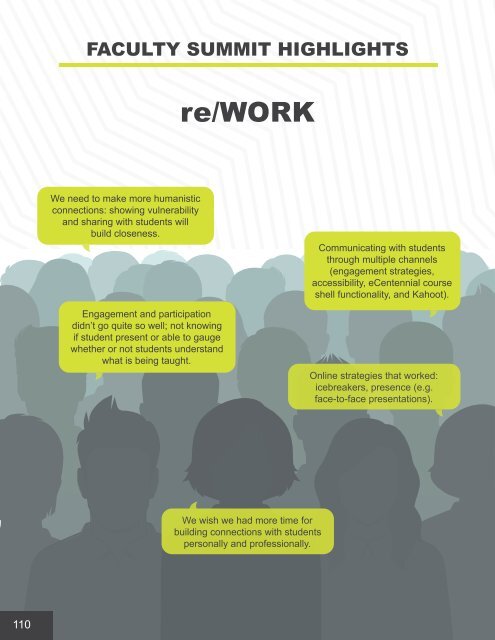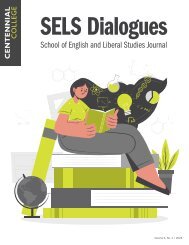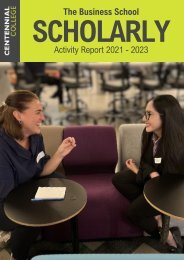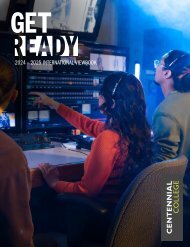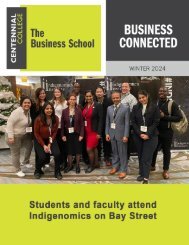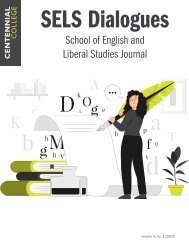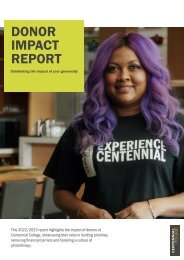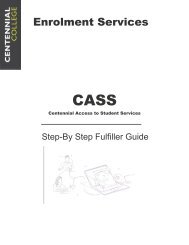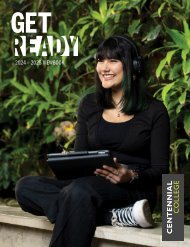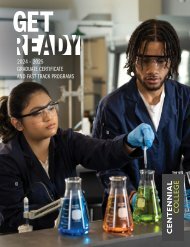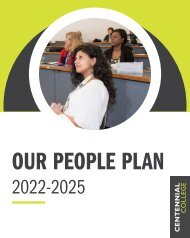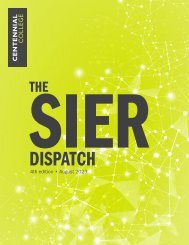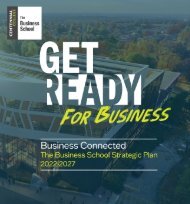The Teaching and Learning Innovation Digest - May 2023
Welcome to a truly special edition of the Teaching and Learning Innovation Digest! Our seventh annual academic publication has assumed an incredibly meaningful shape and form for a number of reasons. Not only did we receive an enthusiastic response with over 30 submissions via our institutional broadcast, but we also have consciously and intentionally embraced the principles of Universal Design for Learning by attempting to represent and celebrate the varied forms of expressions therein. From reflective essays, poetry, visual and performing arts, podcasts, video conversations to scholarly work, academic and applied research, news and updates, and interviews, this is truly a power-packed publication!
Welcome to a truly special edition of the Teaching and Learning Innovation Digest! Our seventh annual academic publication has assumed an incredibly meaningful shape and form for a number of reasons. Not only did we receive an enthusiastic response with over 30 submissions via our institutional broadcast, but we also have consciously and intentionally embraced the principles of Universal Design for Learning by attempting to represent and celebrate the varied forms of expressions therein. From reflective essays, poetry, visual and performing arts, podcasts, video conversations to scholarly work, academic and applied research, news and updates, and interviews, this is truly a power-packed publication!
Create successful ePaper yourself
Turn your PDF publications into a flip-book with our unique Google optimized e-Paper software.
FACULTY SUMMIT HIGHLIGHTS<br />
re/WORK<br />
HOW DO WE re/TURN<br />
TO CAMPUS<br />
With a trauma-informed lens?<br />
Dr. Delon Omrow<br />
Global Citizenship <strong>and</strong> Equity <strong>Learning</strong> Advisor<br />
110<br />
We need to make more humanistic<br />
connections: showing vulnerability<br />
<strong>and</strong> sharing with students will<br />
build closeness.<br />
Engagement <strong>and</strong> participation<br />
didn’t go quite so well; not knowing<br />
if student present or able to gauge<br />
whether or not students underst<strong>and</strong><br />
what is being taught.<br />
We wish we had more time for<br />
building connections with students<br />
personally <strong>and</strong> professionally.<br />
Communicating with students<br />
through multiple channels<br />
(engagement strategies,<br />
accessibility, eCentennial course<br />
shell functionality, <strong>and</strong> Kahoot).<br />
Online strategies that worked:<br />
icebreakers, presence (e.g.<br />
face-to-face presentations).<br />
<strong>The</strong> return to campus was inevitable, albeit<br />
cautionary for those educators <strong>and</strong> learners<br />
who witnessed the toll that the COVID-19<br />
p<strong>and</strong>emic exacted upon us. For some, the<br />
p<strong>and</strong>emic derailed lives <strong>and</strong> aspirations<br />
—best laid plans went astray <strong>and</strong> dreams<br />
were deferred. <strong>The</strong>re was, however, another<br />
long-st<strong>and</strong>ing p<strong>and</strong>emic: the wicked problem<br />
of racism. For almost two years, students<br />
“zoomed” into their classes while racial justice<br />
waned during the COVID-19 p<strong>and</strong>emic with<br />
the death of George Floyd; an Indigenous<br />
community in Kamloops, British Columbia<br />
unearthing the remains of 215 children<br />
on the grounds of a former residential<br />
school; <strong>and</strong> Asian communities witnessing<br />
anti-Asian racism <strong>and</strong> xenophobia as the<br />
rest of the world tried to lay blame for the<br />
spread of the COVID-19 virus. As educators,<br />
we need to re-engage with each other<br />
on campus; reassembling, reconnecting,<br />
reworking, reimagining, <strong>and</strong> rethinking our<br />
pedagogies. In what follows, I unpack the<br />
potential of a new, <strong>and</strong> innovative, iteration<br />
of Universal Design for <strong>Learning</strong> designed by<br />
Andratesha Fitzgerald (2020): A+UDL. This new<br />
approach synthesizes anti-racism (A) with<br />
Universal Design for <strong>Learning</strong> (UDL), adapting<br />
multiple means of representation, engagement,<br />
<strong>and</strong> action <strong>and</strong> expression to “safety checks”<br />
as a way to ensure we uphold trauma-informed<br />
approaches to education.<br />
Trauma-informed approaches to teaching entail<br />
developing an underst<strong>and</strong>ing of strategies to<br />
best respond to <strong>and</strong> support those affected<br />
by interpersonal violence <strong>and</strong> structural<br />
violence (Portell, 2019). How can we possibly<br />
expect students to return nonchalantly to<br />
in-person, synchronous classes without<br />
exercising agility <strong>and</strong> adaptability in course<br />
design <strong>and</strong> delivery—especially surrounding<br />
the various shades of racism on campus?<br />
This is where an anti-oppressive lens must be<br />
invoked, acknowledging our social location,<br />
power, <strong>and</strong> privilege as educators, <strong>and</strong> the<br />
role we play in creating psychologically<br />
safe <strong>and</strong> inclusive environments. This, I<br />
fervently believe, can be achieved by using<br />
A+UDL in the classroom. Some faculty are<br />
apprehensive about learning more about UDL<br />
<strong>and</strong> its putative connections to anti-racism,<br />
fearing that such interconnections are difficult<br />
to navigate. However, as two disparate<br />
pedagogical frameworks designed to address<br />
student differences, both UDL <strong>and</strong> anti-racism<br />
consider ways in which traditional pedagogies<br />
result in barriers to learning for Black,<br />
Indigenous, <strong>and</strong> racialized students (Kieran<br />
<strong>and</strong> Anderson, 2019).<br />
<strong>The</strong> Centre for Applied Special Technology<br />
(CAST) has laid the framework for<br />
supporting learner variability, inspiring<br />
educators to adopt culturally responsive<br />
teaching strategies. I, for one, have always<br />
believed that content that is not engaging<br />
is not accessible. Thus, when we re/TURN<br />
to campus, it must be with the intention<br />
of curating resources <strong>and</strong> content which<br />
speaks to our students’ values, lifestyles,<br />
approaches, <strong>and</strong> world views. This will, first<br />
of all, recruit student interest <strong>and</strong> honour<br />
their lived experiences. Consider how the<br />
111


